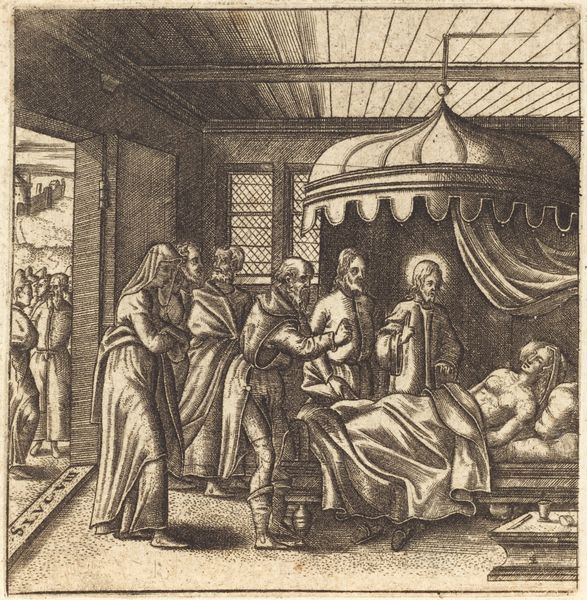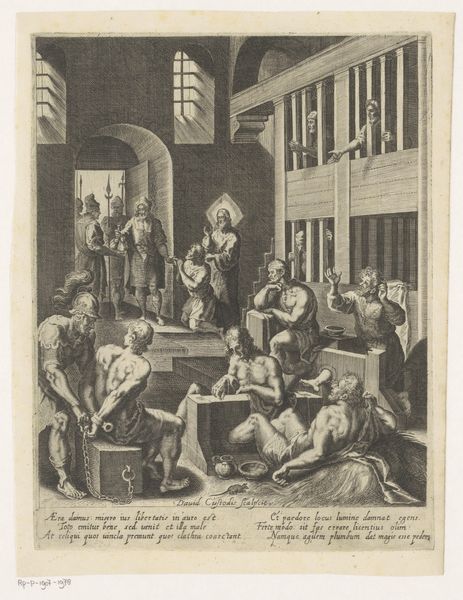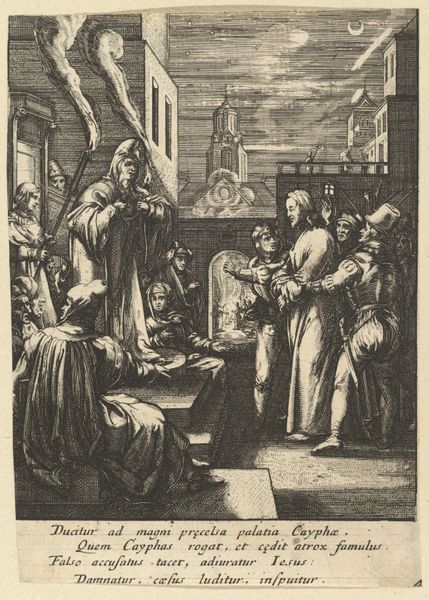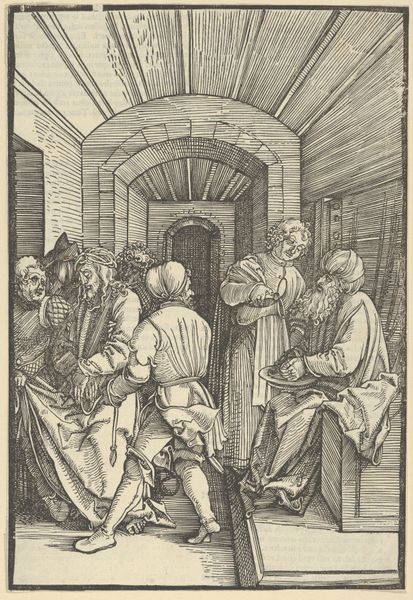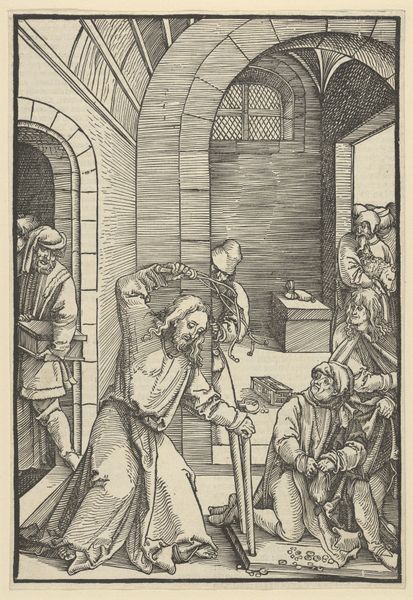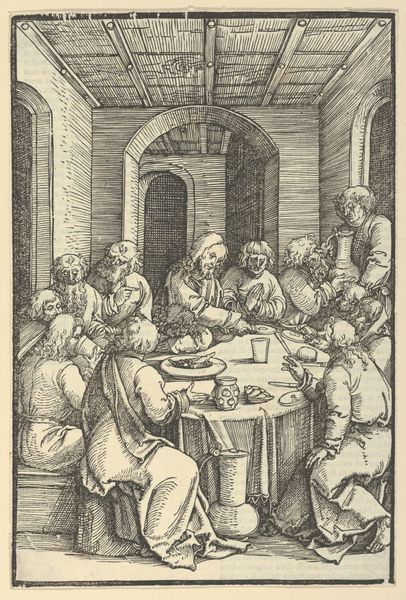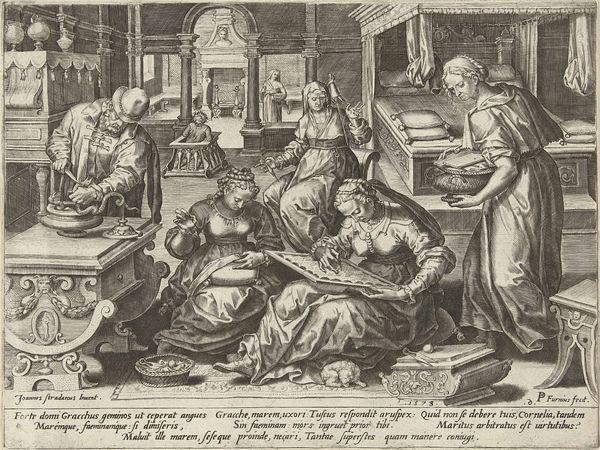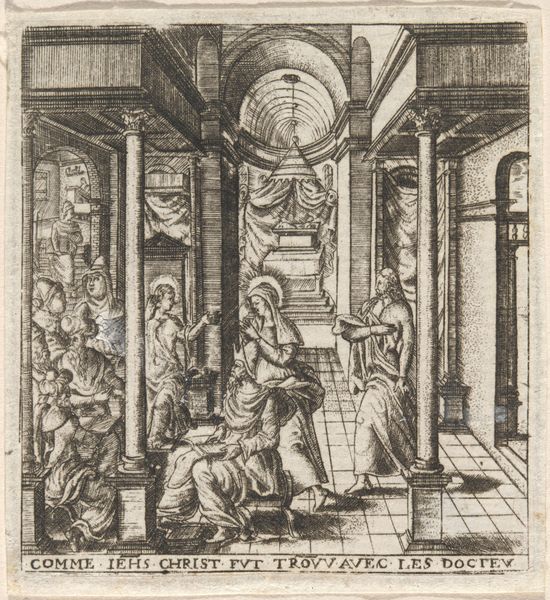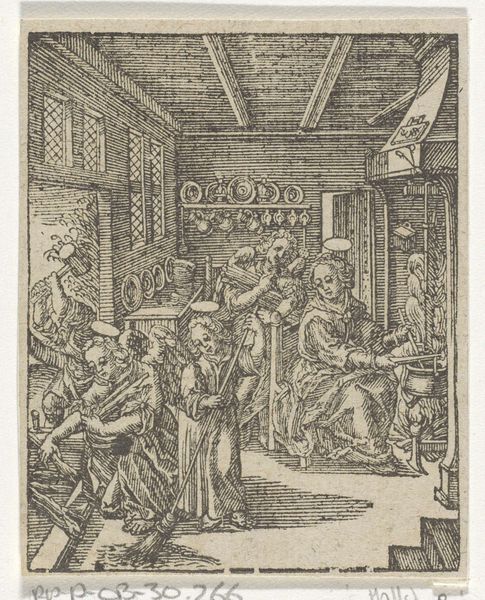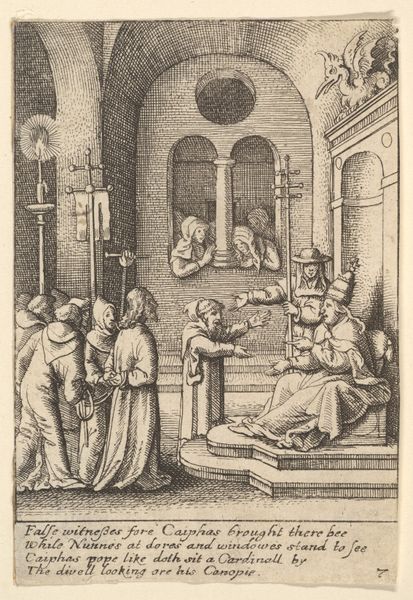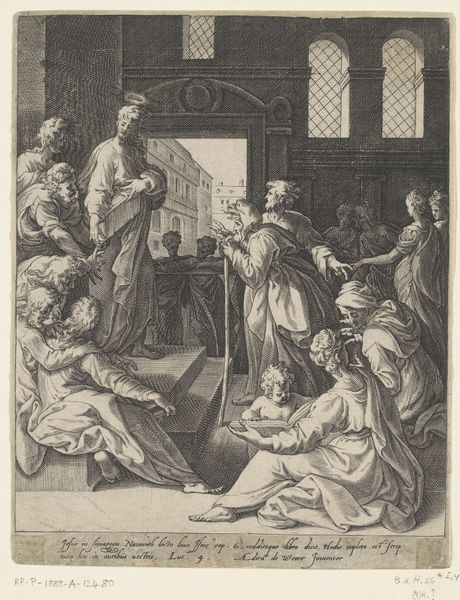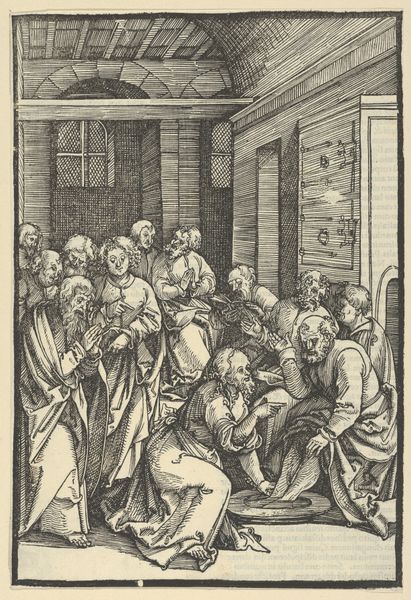
print, engraving
# print
#
mannerism
#
figuration
#
history-painting
#
engraving
Copyright: National Gallery of Art: CC0 1.0
Curator: Immediately, I’m struck by the busyness, the intense visual labor present in this print. The hatching creates a dense texture, almost oppressive in the enclosed domestic space. Editor: We're looking at a print from around 1576-1580, titled "Christ in the House of Mary and Martha" by Léonard Gaultier. It depicts a biblical scene, rich in its implications for the roles of women in society and the Church. Curator: Right, and Gaultier clearly engages with Mannerist sensibilities here. That elongated figure of Martha seems pulled, almost stretched by her duties. Notice also how Christ gestures assertively, his arm anchoring the whole composition. It feels very performative, staged even. Editor: That staging you mention reflects the broader artistic trends and patronage of the era. Prints like these disseminated religious ideas to a wider audience, reinforcing orthodox doctrines and promoting specific moral values about work and devotion. It was powerful stuff at a time of reformation. Curator: The materiality, the act of engraving itself, played a crucial role too. Each line painstakingly etched, each plate carefully inked. The production demanded immense skill, embedding a kind of manual labor in the image itself. And who was doing this labor? It couldn’t have been Gaultier alone. Editor: That is absolutely something to consider. It raises important questions about workshop practices, collaborative economies and artistic skill within the means of production at the time. What impact does it have on our understanding when it’s more of a mass produced reproduction and not necessarily “hand-made”? Curator: For me, thinking about its socio-political role as art is the power it had on the viewer. Did viewers focus on the spiritual message? Did they connect on gender issues or religious doctrine. What messages or values did they accept at the time that our society today scrutinizes more harshly? Editor: Exactly! And from a materials perspective, to really explore how the economics behind printmaking has shifted over time reveals so much about our perception of value today. Curator: Seeing the artwork under such light helps ground it from something beautiful to behold, to what it socially, and institutionally means to those looking at it. Editor: Looking at it this way helps see both art and craftsmanship and reminds us of art's connection to our very lived experience, changing over time but deeply important.
Comments
No comments
Be the first to comment and join the conversation on the ultimate creative platform.
